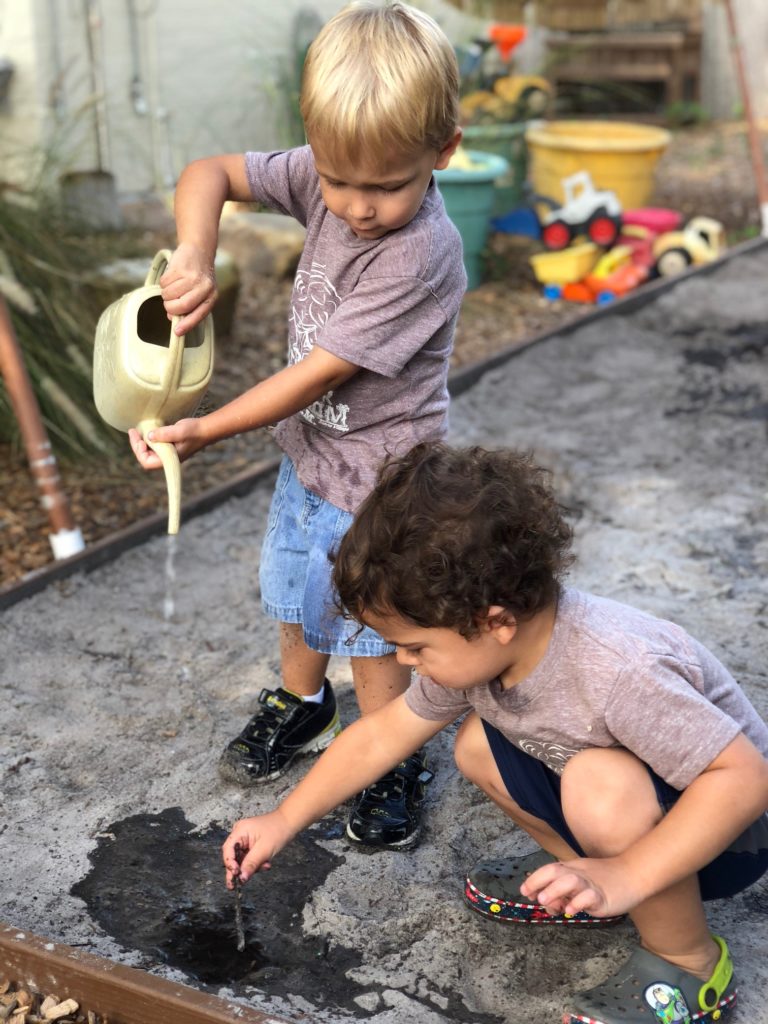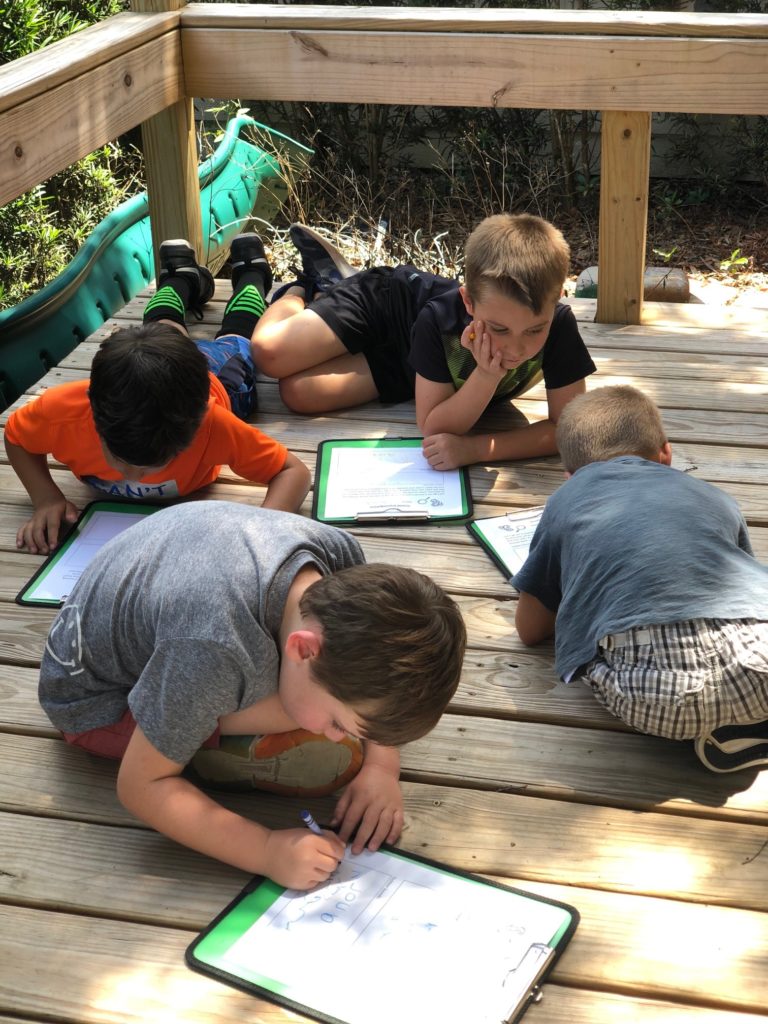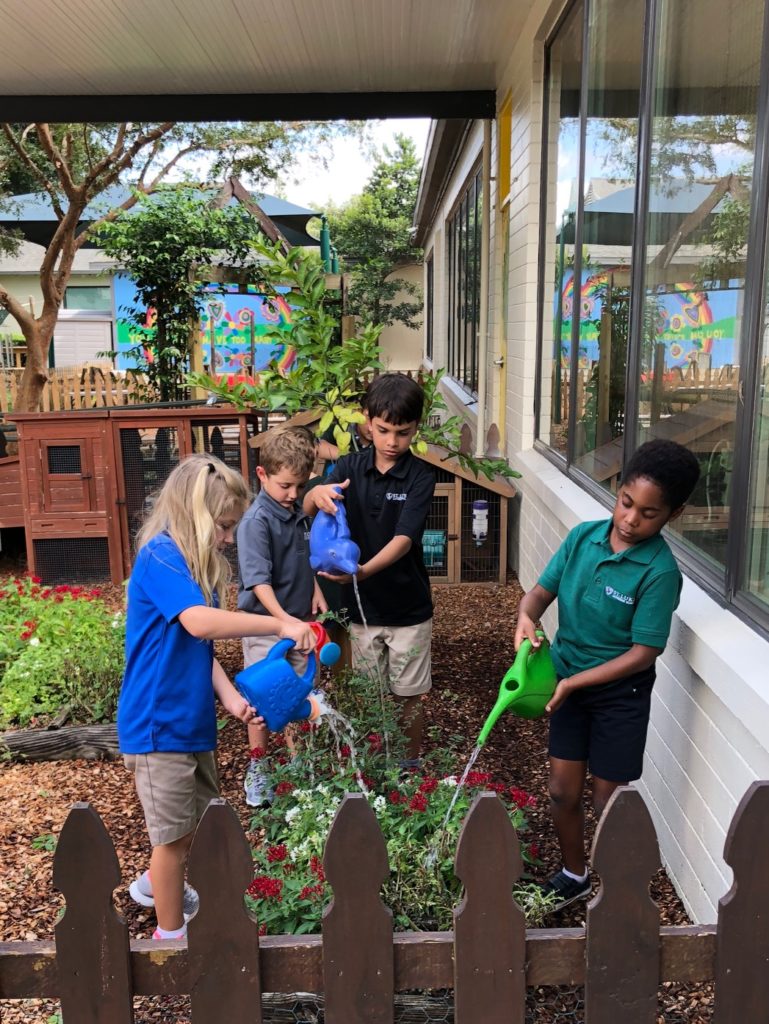Wondering what to do with all that free time with your kids this summer? Well, look no further! Listed below are ten fun, interactive and educational summer sensory activities for kids of all ages! Some may require a little more prep than others, but they all engage children in messy sensory experiences which is so important for every child’s development. These activities encourage fine and gross motor skill practice, concentration, imaginative and creative thinking, problem solving, and teamwork.
1. Water Play
What better way to cool off in the summer heat! There are endless possibilities when it comes to water play! From a plastic pool, large mixing bowl, plastic storage bin, or really any container will work! Next, adding food coloring, plastic animals, sea shells even measuring cups, or some dish soap can allow for endless exploration with your little ones. Let their imaginations run wild!
2. Erupting Ice Chalk
This is one of my personal favorites! It does take some minimal prep, but the result is worth it! Mix four ingredients (water, baking soda, cornstarch and food coloring) in a bowl, then pour into an ice tray. (I’ve found silicone trays work best, but any ice tray will do.) Let them freeze overnight. Pop out the chalk pieces the next day and let the fun begin! Once children are done drawing on the sidewalk, have them take small cups of vinegar to pour over their chalk drawings and watch them “fizz.” The vinegar should react with the baking soda to create this reaction! The chalk rinses right off with a little bit of water or let the rain get the job done. This is a great way to integrate a science experiment into some summer fun!
3. Mud Fun
Who doesn’t love to get messy? Find some dirt or buy some at your local home improvement store, add some water and let your kids explore! They can build with mud, use beach toys like molds to make shapes, draw their name or practice their numbers and even make an art project if paper is provided. Mud is so simple to make yet has so much educational value. Kids can learn about absorption and saturation, how water or lava flows down a river/volcano, what kind of habitat worms live in, about plant food, etc. There are lots of ways to learn with mud!

4. Summertime Slime
Slime is kid favorite, so why not put a little summertime twist to it? Buying a few simple ingredients (Elmer’s glue, Elmer’s Magic Liquid or baking soda/contact solution, and baby oil) and adding some fun summer elements to your slime will make it so much fun for you kids! Add food coloring, glitter, sand, small shells or even plastic animals, like sea creatures. Your children will love the endless fun they can have with their slime! Store it in an airtight container for even more fun later!
5. Food Sensory Play
There are lots of ways food can be turned into sensory activities. Color some rice or make “worms” from cooked spaghetti! Use dried beans with cups/bowls to practice measuring and pouring. Beans can also be put into jars/cups to experiment with sound. Make Jell-O and let your children use their hands to squish and explore its texture. Make oobleck out of cornstarch and water for a messy solid/liquid concoction. Marshmallows, big or small, are great for building or creating letters/shapes/numbers. To extend the building aspect of this, provide children some toothpicks to make buildings and other structures. There are countless other ways food can be integrated into messy sensory play!
6. Nature Scavenger Hunt
This is a great way to get kids outdoors and engaged in their nature surroundings. You can tailor this to work with any age group. For younger children, this can be simply collecting items you find along your nature walk which can be made into a craft later. For older children, have them grab a clipboard, piece of paper and marker/crayon and write down things they see along their walk. If you have time, you can create a scavenger hunt worksheet for them to search for specific nature animals/items outside. A magnifying glass could easily enhance this activity.

7. Silly Shaving Cream
How fun and simple is shaving cream? Kids love the soft and squishy texture and the smell makes it even more appealing! This can be done outside, on a plastic table, in a plastic container, etc. Add glitter, food coloring or whatever else you can think of. Let children get as messy as can while they use their imaginations to play and create with the shaving cream!
8. Ice Digging
This is another fun ice activity that takes a little prep but is great fun for children and improves their fine and gross motor skills. Grab some ice trays or small plastic containers, add water and some plastic toys or plastic animals, freeze overnight and let the fun begin the next day! Make sure you have a spoon, fork or tongs available, even a cup of warm water could extend your child’s exploration. Allow children to problem solve and work together to figure out how to get the toys out of the ice! Watch as they use the various tools to dig at the ice and the excitement when they are finally able to get the toy or animal free!
9. Playing with Paint
Paint is a wonderfully creative material that can be used for all sorts of activities! It can be store bought or homemade, even to be edible or fragrant! Painting can be done with hands, feet, paintbrushes or parts of nature like leaves or sticks. Your child’s canvas can be whatever they decide: paper, nature items, wood, ice, plant pot, the list goes on! Painting is an excellent creative outlet for children to use their imaginations and make whatever their heart desires. Of course, paint can get real messy, so let your children explore with the paint, especially if they are outside!
10. Plant a Garden
Grab your shovels, some dirt and your favorite seeds, and plant a small garden in your backyard. This is a perfect way to get children excited about plants and taking care of nature. Buying them a small watering can allow them to feel a sense of responsibility to water and take care of their plants. Maybe you don’t have the yard or budget for a small garden? No problem, you can buy small planting pots at the dollar store or use any kind of container you can find at home. Maybe an old water bottle which can teach children how to recycle and use items in a new way. What a great chance to spark learning about plant life cycles and what they need to grow.

Hope you’ve enjoyed these summer sensory play suggestions. I encourage you and your family to try a few out at home! You might be surprised at how much fun your children will have and what they end up discovering!